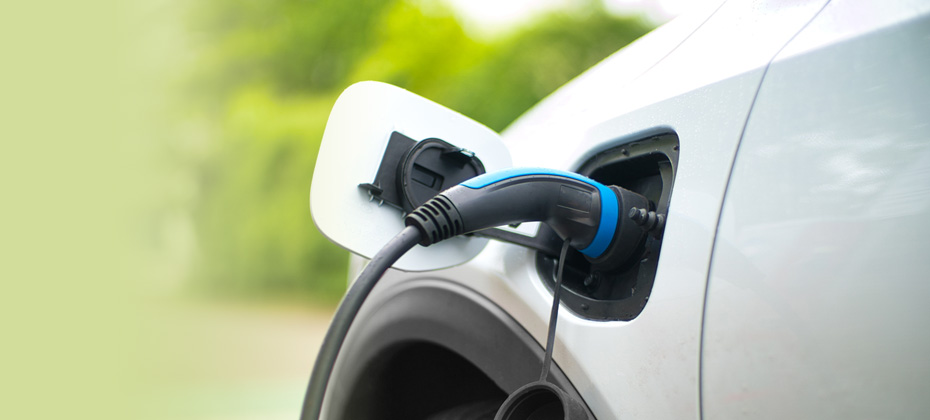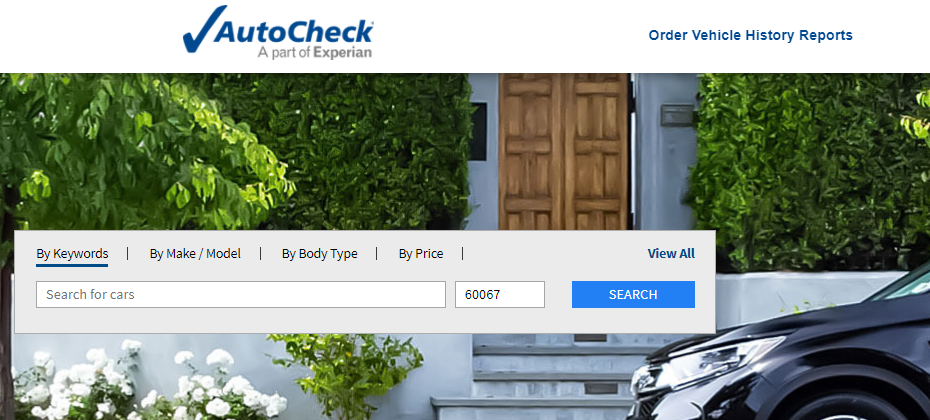Automotive Marketing

With used vehicle sales up 13% from 2020 to 2021, and auction volumes at historic lows, obtaining vehicles directly from consumers offers an opportunity for dealers to maintain a profitable sales pipeline. The key for dealers is to understand how their sales stack up against other local dealers — and more specifically, what types of vehicles those competitive dealers are selling. Dealers should take advantage of market visibility Experian’s marketing solution, the Automotive Intelligence Engine (AIE), offers dealers market visibility of pre-owned sales trends and recommends marketing strategies to help acquire used vehicle inventory. AIE provides specific strategies to help dealers acquire the most desired units and reach/resonate with consumers who are most likely to bring those units in on trade. Dealers can view: Who owns desirable vehicles the dealer would like to purchase Strategies to acquire and sell used units Sales trends such as segment, class, model, make and model Financing trends such as credit score, term, and lender Audience makeup: demographic and psychographic characteristics, who owns what type of vehicle, and where they live. By understanding the used owner, dealers can use messaging that resonates to help upsell them into a newer vehicle they desire—helping dealers stay competitive in today’s market. Dealers should also look at lending trends Exploring the world of used vehicle sales should also extend into lending trends. Since used vehicles are not included in OEM lending incentives, understanding trends helps dealers make more informed decisions. Used vehicles can qualify for special OEM sponsored CPO financing. With AIE, dealers have visibility into the amount financeable percentages, APR trends, terms, and tiers for lenders within their market. This benefits dealers to know which lenders are covering more significant percentages like 140% of NADA and what lenders are covering lower credit tiers. Knowing options on the lending side of the transaction empowers dealers to expand their financing options to work with lenders who facilitate lower credit scores or cover higher percentages. Learn how Experian’s Automotive Intelligence Engine can help you make more informed decisions about used car inventory acquisition. You may also be interested in reading more about audience segmentation and AIE in our blog, Data-Driven Audience Segmentation Empowers More Effective Omnichannel Marketing. 1US Used Car Market Finishes Strong in 2021: What's Up for 2022? | Nasdaq

As I reflect on the past two years and think about how the pandemic impacted the automotive industry, I realized that although it was a crazy ride, I believe there was a silver lining – at least for marketers at OEMs, agencies, and large dealer groups, who are tasked with advertising to consumers. I’ll explain more in a minute. First, let’s very briefly recap some trends we’ve recently experienced: Auto dealerships shut down showrooms to in-person shoppers Chip shortages paralyzed new vehicle manufacturing (and are ongoing) Shoppers rapidly shifted to online car shopping (and buying) Pre-owned vehicle sales went through the roof (and remain high) Streaming services went wild, and consumers continue to devour content Marketers shifted focus to more digital marketing to meet consumer demand So, the silver lining? Auto marketers certainly had to take a crash course in the new consumer buying journey. One result was an appreciation for the complexities of digital experiences and a new understanding of unique consumer behaviors and preferences. Here are a few things marketers learned: Consumers want to feel connected to their preferred brand(s) They want to be in charge of their shopping and buying journey Consumers want transparency and honesty from their brand (and dealer) They want the information they are looking for to be both instantly available and on their preferred devices Consumers want time to make a decision Before the pandemic, research revealed that about 88% of prospective car buyers researched options online before stepping into a dealership, and 60% of shoppers spent six or more months on their search, with up to 24 marketing touchpoints along the way.1 So, how do marketers ensure their advertising appears, front and center, for all these touchpoints? Today, the challenge for auto marketers is to stay on top of the consumer’s needs and be there when they are “looking or hearing” their message. This includes creating relevant messages across all media, including social, email, text, web, direct mail, Connected TV, linear, and Addressable TV channels. And don’t forget, consumers have multiple devices now, so it’s even harder for your message to “find them.” During their auto buying journey, consumers are a moving target! To succeed in today’s new world, auto marketers need to rely heavily on data insights that enable them to send targeted, relevant messages exactly where the consumer wants them. Is this even possible? In a word, yes. We’ve published a resource for auto marketers To help marketers stay on top of the latest data science trends and the insights this data produces, we’ve written, Using Data Insights to Drive Measurable OEM Marketing Strategies. We discuss the new consumer buying journey, the explosion of personal devices, the latest in data-driven insights, the increase in media channels, and how to best target, activate, and measure marketing campaigns while optimizing spend. We cover five areas that we believe auto marketers need to focus on to be successful: Identity: Learn the importance of linking fragmented data across channels, platforms, and devices to build unified customer profiles that enable a multi-channel customer experience. Insights: Understand how applying data insights can help make more strategic and effective marketing decisions regarding your audiences, channels, messaging, and goals. Audiences: Read about the value of leveraging automotive, predictive, and lifestyle data to build precisely segmented audiences for every marketing campaign. Activation: Learn how you can leverage our relationship with more than 100 media partners and digital platforms to launch and optimize your marketing campaigns across all channels. Measurement: Read about the importance of accurate measurement and determining the ROI of your online and offline campaigns to gain actionable insights for future campaigns. Get started by reading a complimentary copy of Using Data Insights to Drive Measurable OEM Marketing Strategies. Learn more about Experian's OEM marketing solutions. https://www.forbes.com/sites/forbescommunicationscouncil/2020/09/10/why-automotive-marketing-is-changing-and-how-to-meet-the-demand/?sh=16d583c9a3dd

Easily access an Open Recall Report for all your listed inventory whenever you need it and as often as you like. Run the report in real-time to learn which of your units have an open recall and what that recall information is: the recall date, the recall detail, and the recall.

The State of the Automotive Finance Market: Q4 2021 report broke down alternative fuel financing trends—specifically how electric vehicle (EV) financing doubled year-over-year.

The automotive marketing world has benefited from cookie-based information to help identify and reach consumers in the market for a vehicle. Now that cookies will be going away, marketers need to find alternate ways to find in-market consumers. Let’s explore. What are cookies? Created to personalize internet browsing experiences, cookies are small pieces of code placed within a user’s browser whenever someone visits a specific website. Cookies typically track the website’s name and a generated unique user ID. They can capture page clicks, viewed web pages, clicks within a website, and Personally Identifiable Information (PII) such as an address, name, and device IDs. How are cookies used in marketing? Cookie data helps automotive marketers enhance the user experience by better understanding consumer behaviors to deliver targeted, relevant messaging that moves the consumer through the buying funnel. For example, think about when a consumer researches RVs/travel trailers to see if their current vehicle can handle towing a camper or when they search for the best way to hook up a camper. A dealer could use this cookie data to send advertisements for trucks with a towing package that could potentially tow a trailer. Cookie support is ending, so now what? In 2020, Google announced it would end support for cookies in the Chrome browser by early 2022. This timeline was established to allow Google to address the needs of users, publishers, and advertisers to respond and look for workarounds. The revised timeline puts Google’s cookie retirement in 2023. Marketers have been using cookie data in advertising for years, so what are the options when cookie data goes away? Cookie alternatives Automotive marketers can tackle a cookie-less world by using other sources of consumer data insights. For instance, a third-party data aggregator, like Experian, has access to numerous sources, platforms, and websites. Beyond that, we have access to a vast range of specific consumer data insights, including vehicle ownership, registrations, vehicle history data, and lending data. We take all that information and help marketers segment audiences and predict what consumers will do next. (That’s more than the average cookie!) Sample audience segment information: Consumers in market Loan status In positive equity Driving a specific year/make/model 1000+ lifestyle events such as new baby, marriage, new home Geography, demographics, psychographics To take it to the next level, we can use predictive analytics to go beyond what cookie data could provide by predicting who is ready to purchase a vehicle. In our example above, a marketer used cookie data to find buyers who had shown interest in a tow package, but that’s where it ended. By combining audience segmentation with a predictive model, marketers can target and identify consumers in-market and most likely ready to purchase a vehicle with a tow package. In this way, the data-driven insights from a third-party data provider specializing in automotive insights can replace the cookie-driven approach and take it a significant step beyond. Other ways to reach consumers in a cookie-less world Automotive marketers can also use data-driven insights to further explore specific channels where consumers spend their time. Social media, for example, is an effective channel to reach consumers. Marketers can go beyond standard Facebook audiences by utilizing Experian audience segmentation and predictive analytics to highly target consumers on Facebook. So, if you can predict when a consumer will be in-market, and you know in what channel they spend most of their time, you can target them with specific messages about your dealership and your vehicles. With cookies becoming a tool of the past, knowing who is likely to be in-market, what message resonates with them, and the best channel to use allows marketers to move beyond cookie-based strategies effectively. So, let the cookie crumble! For a deeper dive into cookies, watch this recorded webinar from the 2021 Digital Marketing Strategies conference: As the Cookies Crumble, How Will Automotive Digital Marketing Respond? Presented by Experian's Amy Hughes, Sr. Director of Dealer Intelligence. Learn more about Experian’s Automotive Intelligence Engine and how audience segmentation and predictive analytics can drive more in-market buyers to your dealership.

While many view Millennials and Gen Z through the same lens, savvy automotive marketers are adjusting their strategies to capture the market of this generation.

We conducted a study of thousands of online listings to better understand what details are crucial for VDPs, which Kirsten Von Busch will be debuting the results of at the NADA Show in March.

Creating a consumer experience where a customer receives a series of relevant and timely content is the goal of omnichannel marketing. OEM marketers work hard to develop effective marketing strategies that create fully integrated shopping experiences for customers. Build loyal relationships with omnichannel marketing Well designed, omnichannel marketing strategies foster a sense of relationship between the vehicle/brand and the consumer that can increase brand and dealership loyalty. Today's OEM marketers understand their customers are “everywhere.” Channels have exploded, especially in the past several years so marketers need to know how to best reach consumers. With multiple apps, websites, social media, email, streaming content, videos and brick-and-mortar dealerships the challenge for marketers is how to pull it all together. Recent research shows that 60% of millennials expect brands to provide consistent experiences across multiple channels and that Gen Z and Millennials are most likely to be “bought” by an effective omnichannel strategy.1 According to Forbes, “companies with the best omnichannel customer engagement strategies turn 89% of buyers into loyal customers. And according to Omnichannel Retail Statistics, companies with weak omnichannel strategies retain only 33% of their customers.”1 It is clear, that implementing an effective omnichannel strategy can result in more sales and increased loyalty. Use data insights to identify and segment audiences When approaching omnichannel marketing, we recommend OEM marketers conduct a detailed analysis, backed by automotive research and data. This analysis will help to accurately identify and segment audiences to deliver targeted, tailored content along the journey. Experian leverages our consumer, lender, and vehicle data along with market insights to facilitate powerful segmentation. As a result, OEM marketers can reach audiences in an effective manner allowing for a more personalized experience. For a deeper dive into segmentation, marketers can gain insights and understanding of key attributes using Experian’s CustomerView data. This data includes demographics, buyer personas, wants and needs, buying patterns, customer behavior, preferences, attitudes, and commonalities. These automotive data insights cover over 310 million U.S. consumers, 126 million households containing 1,500+ individual and household level attributes and 2500+ geographic attributes. This type of segmentation will help you create the right content for the right target group to be delivered at the right time in the right channel. If your message is irrelevant to the customer, or on the wrong channel, you just might lose engagement. Enlist the power of the Experian Marketing Engine™ to facilitate market insights, audience targeting, audience activation and measurement to monitor ongoing success. Learn how the Experian Marketing Engine can help you create audience segments that empower more effective omnichannel marketing today. 116 Proven Omnichannel Statistics That Will Boost Your Sales in 2021 (savemycent.com)

Successful salespeople know that their busiest time is never when they are selling a lot of cars. They are way busier when they are not selling! The act of prospecting, following up, and consultatively selling is a time consuming and challenging process. Nevertheless, for salespeople, this pattern can lead to long term success in automotive sales. Until the inventory and chip shortage issues are resolved, you may find that you are busier than ever. You can no longer wait to greet shoppers as they walk into the show room and spend time chatting and test driving in hopes they will purchase a vehicle the same day. Floor traffic has been on a steady decline for a decade and with today’s vastly reduced inventory there is vastly reduced foot traffic. This does not mean that you should not or cannot sell cars. It means that your time should be filled with prospecting, following up on marketing leads and focusing on the dealership’s loyal customers. Focus on strategies that drive pre-orders In addition to prospecting activities, you will need to be extra resourceful during the sales process. For example, when the dealership does not have a specifically requested car on the lot, you should shift focus from the standard sign-and-drive approach to a focus on pre-ordering vehicles. Pre-orders can be attractive to customers because they give them the ability to create a new vehicle according to their color, options, and other preferences rather than settling for whatever the dealer has in stock (which right now is minimal at best). Experian’s Automotive Intelligence Engine™ (AIE), a fully customizable suite of marketing solutions can provide you and your dealership with the data insights necessary to find consumers who would be interested in your brand and models and who are in an equity position to facilitate a pre-order. Here are a few examples of how AIE helps dealers find likely pre-order consumers: Scenario: A Mercedes dealership would like to secure pre-orders and generate interest in vehicles for when inventory becomes available in 2022. Utilize AIE’s Market Insights to find lifestyle and demographic information to find consumers with a high buying propensity to purchase a luxury vehicle. Use AIE’s Audience Targeting to learn who of those consumers are in a positive equity position. Identify consumers who are likely to buy your models based on their prior purchasing history. Using marketing solutions to help find the right consumer now to create interest in the future could be the key to success in 2022. Focus on short term leases opportunities In today’s market, we also recommend dealers focus on targeting consumers who are nearing the term of their lease—because the end of a lease forces consumers to either turn in the vehicle or purchase it. In many cases, the customer can upgrade to a model with more features or a model in a different class—both of which may be compelling, even if the newer vehicle is an older model year than the trade in. This way, the dealer obtains the later model, lower mileage vehicle and the customer gets a model with the extra features they want or an entirely new class of vehicle. The Automotive Intelligence Engine can provide dealers with near term lease consumers in their area for all brands. For an in depth look at this topic, read our November blog “Using Data Insights to Focus on Near-Term Lease Sales Opportunities.” Learn more about Experian’s Automotive Intelligence Engine.

While dealers wait out the chip shortage, many are looking for new revenue streams and creative ways to maintain profit levels. Dealers understand that used vehicles are more valuable than ever and that savvy consumers who are near their lease term can purchase their vehicle with a much higher book value than their negotiated residual and capitalize on that extra equity. At Experian Automotive, we help dealers analyze consumer and market data insights so they can develop marketing strategies that more effectively engage consumers. In today’s market, we recommend dealers focus on targeting consumers who are nearing the term of their lease—because the end of a lease forces consumers to either turn in the vehicle or purchase it—and many consumers realize they can purchase their equity rich vehicle and trade it in anywhere. Dealers desiring to conquest customers would benefit from using data insights to develop marketing strategies to help educate consumers of their options. So, how do dealers make sure their lease customers remain loyal to their dealership? One way is to target those customers that are near term and recommend a trade in. In many cases, the customer can upgrade to a model with more features or a model in a different class—both of which may be compelling, even if the newer vehicle is an older model year than the trade in. This way, the dealer obtains the later model, lower mileage vehicle and the customer gets a model with the extra features they want or an entirely new class of vehicle. Both parties are happy. What about third party lease buy outs? In response to the inventory shortage, many captive lenders are no longer permitting 3rd party lease buy outs. In other words, consumers are required to purchase their leased vehicle at an in-brand dealership. Initially, this would appear to bolster brand loyalty by making it more challenging to switch brands. However, educated consumers know they can simply purchase the vehicle and drive it to another dealership as a trade. We recommend automotive dealers educate consumers on their options through effective marketing strategies that offer options and more freedom in their car purchasing. Dealers looking for every sales opportunity are utilizing data sources such as Experian’s Automotive Intelligence Engine™ (AIE) to identify all consumers with leased vehicles for their brands. Because the OEM will not share lease customer information for neighboring stores, dealers must seek out this information on their own. Experian’s Automotive Intelligence Engine provides off lease consumer information for conquest brands as well as dealer brands. The OEM still expects each store to be successful and using data-driven insights to uncover opportunities in this tight market is one critical way dealers can stay competitive and increase brand loyalty. The chip shortage will eventually recede but until then dealers can use automotive data insights that can help them remain profitable. Learn more about Experian’s Automotive Intelligence Engine.

As more consumers turn to the internet to research and purchase preowned vehicles, dealers have focused marketing efforts to the online marketplace to get their vehicles in front of shoppers. According to Think with Google, 95% of vehicle buyers use digital as a source of information and it takes 65% of buyers just three weeks to research vehicles online prior to purchase. With seventy-eight percent of consumers visiting two or more sites during their shopping “journey”1 how do dealers capture their attention, increase lead and sales conversions? Dealers need to share key data in a vehicle history report such as information related to reported accidents, odometer readings, open recalls, and whether the vehicle qualifies for buyback protection. These details help consumers better understand and make informed decisions when shopping. Case Study: How leveraging the AutoCheck VHR subscription increased lead and sales conversions Our integration partner, CarZing, an online auto shopping portal, offered a Free AutoCheck® Vehicle History Report on their Vehicle Detail Page (VDP) which increased lead and sales conversions. Together, we analyzed six months of lead activity on millions of vehicle listings on CarZing focusing on the 200 most popular vehicles by year/make/model. Key findings indicated that vehicle listings offering a Free AutoCheck VHR on the VDPs achieved a higher lead conversion rate than listings for the same year/make/model for vehicles without a Free AutoCheck report. Here’s a few highlights from the full report: Furthermore, when layering in available sales data, sales conversion is higher for vehicles featuring a free VHR available to consumers than vehicle listings that did not. Based on the results, CarZing’s Director of Operations, Frank Merle strongly encourages all AutoCheck clients take advantage of the exponential value that offering a free AutoCheck report brings to dealership VDPs. Dealers with an AutoCheck subscription can list their vehicles for free on AutoCheck.com and CarZing.com. Simply contact your Experian account executive or call 1 888 409 2204. For dealers that are not yet subscribers, here’s a few more things you may not know about Experian AutoCheck Vehicle History Reports. We do not re-market to shoppers, resell VDP leads or offer your competitors’ inventory for consideration on AutoCheck.com. Our goal is to help your dealership sell your inventory. For dealers who are interested in learning more about the benefits of becoming an AutoCheck subscriber contact us today. 1https://www.coxautoinc.com/wp-content/uploads/2021/02/Cox-Automotive-Car-Buyer-Journey-Study-Pandemic-Edition-Summary.pdf

In Experian’s Automotive Market Trends Review: Q2 2021, we looked at the data to better understand EV and internal combustion engine registration trends.

Although 2021’s continued focus is Americans learning to co-exist with COVID-19, automotive manufacturers and dealers will likely remember 2021 as the year of the chip. The semiconductor chip shortage is now expected to cost the global automotive industry $210 billion in revenue in 2021 and it is now forecasted that 7.7 million units of production will be lost in 2021, up from 3.9 million in the May forecast.1 Most experts agree that the shortage will likely extend into 2022. Chip Shortage Creates Additional Challenge for Dealers The current shortage in semiconductors has automotive manufacturers and dealers questioning whether to continue advertising or pull back. Some dealers view the increase in profits due to reduced inventory a signal to pull back on advertising spend. Other dealers, however, are thinking about long-term marketing strategy—and are continuing to advertise to help maintain brand exposure to customers. Foreword-thinking dealers and agencies should use this time to evaluate advertising strategies and plan for life after the chip shortage. Staying visible to customers in the interim is critical, so any advertising needs to be strategic in audience, medium and message. Here are three recommendations to help keep your brand in front of current and future consumers while using marketing dollars wisely. Identify Your Audience: Be Sure to Market to the Right People Knowing which consumers are most likely to purchase your vehicles is a key element of targeting with the promise of saving money by marketing only to those who are most likely to result in a sale. By evaluating prior purchase, demographic, and psychographic trends, including specific life events, dealership marketers can more effectively pinpoint demand as well as foster positive relationships. For example, knowing that a consumer recently added a new child to the family would be a great reason to send a coupon or make a call. Experian’s Automotive Intelligence Engine™ (AIE) will send “events” to your CRM to alert you of life events that can help develop and deepen relationships that lead to future vehicle sales. Additionally, AIE’s Market Insights enable dealers to grow market share by identifying the best prospects and matching them with the right messages. Strategically targeting both conquest and loyal customers with appropriate messaging keeps consumers engaged so they will remember your brand when they buy next. Leverage Your Brand Reputation Keeping your brand front and center has been the cornerstone of your marketing efforts and that shouldn’t change. Much like looking at family photos or reading an article about your favorite team, exposure to positive advertisements reinforces a consumer’s relationship with your brand. Whether the goal is to leverage your OEM driven brand awareness or support the consumer relationship with your dealership, positive messages from local dealers perpetuate ongoing loyalty. Experian’s Automotive Intelligence Engine generates powerful marketing strategies and efficient data-driven, omni-channel media plans with engaging, brand-specific messaging direction that resonates with consumers. Dealers and agencies use AIE to generate custom marketing plans that leverage data-driven market analysis, strategic audience creation, and powerful marketing strategy, creating messages that effectively reach the right prospects, with the right message, on the right channel. This end-to-end solution will reach consumer mailboxes, inboxes, screens, and computers where your best audiences spend their time. Continue to Foster a Positive Relationship with Consumers Marketing is more than selling a story. Marketing initiates the consumer experience, especially in the digital world. From effective OTT ads to strategic social posts, successful dealerships often put their relationship with the community at the heart of their message. Simple images of your dealership delivering meals to local first responders and essential workers or posts showing the local high school marching band loading instruments into one of your trucks can convey a strong sense of community pride to your brand. This sort of promotion impacts future consumer purchases well beyond any chip shortage. While the chip shortage has had a profound impact on how dealerships approach vehicle acquisition, price structures and marketing, it will eventually be resolved. The decisions you make now can have a big impact on your success when the shortage ends. Learn more about Experian’s Automotive Intelligence Engine™ (AIE). https://www.cnbc.com/2021/09/23/chip-shortage-expected-to-cost-auto-industry-210-billion-in-2021.html

When we look at how automotive manufacturers and dealers have marketed vehicles over the last few decades, we can see how through every decade, and every learning, it has led to data-driven marketing strategies that are powering success today. Let’s take a look: Strategic marketing in the 1990’s In the 1990’s dealership marketing included mainly newspaper and radio advertisements complimented by occasional direct mail pieces mailing to every home in a zip code. OEMs purchased ad time on popular Television and their dealer associations and local dealers had an option to do the same. Because the 1990’s was the age of “mass media,” marketing was based off geography. There was less attention on channel or audience and a good deal of spending! Cars were sold. Strategic marketing in the 2000’s The new millennium brought advancements in computers and databases. Dealerships explored the exciting world of internet promotion and email marketing and continued using traditional newspaper, radio and television to drive traffic. mail programs such as the “scratch and win” or the “key to a car you can win” efforts were common, resulting in massive mail-based marketing campaigns. Then came 2008, when many dealers drastically cut back on spending and were focused mainly on surviving the Great Recession. As we all know, many dealers, and even vehicle makes, did not. Strategic marketing in the 2010’s In the beginning of the decade, manufacturers and dealers were still recovering from the recession but were slowly feeling more optimistic about the economy. If there is one thing the industry learned from the recession, it was to be much more strategic when it came to spending. During this decade, ad technology advanced, as did the ability to evaluate marketing spend. Dealers became aware of the true cost of their traditional marketing ways and embarked on new paths of marketing to a smaller but more specific audience. Equity mining and greatly advanced revolutionized the direct mail and related online arena. As the decade drew to a close, marketers leveraged solutions where merge fields enabled customization and personalization for both direct mail and email marketing. With the ability to deliver massive volumes at a lower cost, email blasts grew in popularity. Social media platforms emerged as a force, and dealers experimented to invent new ways to leverage them. Television marketing underwent a massive facelift as consumers left cable for streaming services resulting in new advertising strategies such as addressable and connected TV, OTT (Over The Top) advertising. Strategic marketing in 2020 2020 will forever be remembered as the year of the pandemic. In automotive marketing, it was also the year of reinvention! With many showroom closures, dealers and OEMs found themselves with a reduced advertising budget and a greater need to find more targeted audiences with more effective marketing messaging. How do I master my market share? Who is in-market for my vehicles? How is my website performing? Which customers are in equity? Which customers have added a child to the household? How do I reach them in a digital world? This is where Experian has helped both manufacturers and dealers. Experian’s automotive marketing solutions help marketers utilize vehicle, consumer, lender, and market data to leverage market insights, target the right audience, develop effective messaging strategies, and measure outcomes to continually optimize results. Over the last four decades, automotive marketing strategies have become much more data driven, so having a solution that uses data insights to help retain loyal customers and win new conquest customers, all while reducing total marketing spend, is a key requirement for success in this decade…and beyond. If you're a marketer at a Dealership, learn more about our marketing solutions here. If you're an Auto OEM marketer, learn more about our marketing solutions here.

Your local auto market changes every day. Today’s challenge is securing the inventory needed to keep new and repeat customers coming in the door. Tomorrow it might be finding the right customers for the inventory you have secured. Either way, understanding the competitive activity in your market is key to developing ongoing strategies for success. Important competitive insights include the ability to: • Gauge your performance against the competition by identifying each unit registered in your market • Discover what vehicles are popular among your consumers by make and model • Identify the key characteristics of customers in your area. In yet another benefit, Experian provides our AutoCheck Elite dealer clients with complimentary access to in-depth market reporting, including these comprehensive reports: The AutoCount Market Ranking Report Learn whether you’re getting your share of vehicle sales in your local market’s top zip codes. This report: • Lists all sales activity within a 15-mile radius of your dealership • Provides unbiased monthly information from state DMVs on new and used vehicle sales • Includes access to our web-based portal to provide instant access to a variety of customizable reports • Identifies vehicle registration by ZIP code to pinpoint marketing opportunities The AutoCount Vehicle Model Ranking Report Stock the right inventory by learning what vehicles are popular among your consumers (see example below). This report: • Provides an expanded view of the dealership’s market, which leads to more informed decisions that maximize untapped profit potential • Track the top 25 new and used vehicles within a 15-mile radius of your dealership as well as the top gainers and losers in the market • Offers an easy-to-read graphical summary of critical market information, including lender ranking • Gives an unbiased scorecard of dealership performance in the local market to determine market share and competitive insight Having access to monthly DMV reports and analysis can help deliver a competitive edge to your dealership. To become an AutoCheck member today, contact us or call 1.888.409.2204.